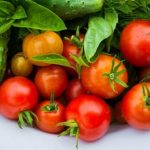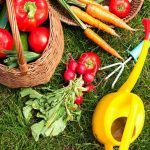Are you looking to start a new hobby that is not only fulfilling but also rewarding? If so, gardening might just be the perfect activity for you. In this article, we will explore the world of gardening for beginners and specifically focus on creating a vegetable garden layout.
Gardening can be a great way to relax and unwind, while also providing you with a sense of accomplishment as you watch your plants grow. The added bonus of growing your own vegetables ensures that you have access to fresh, organic produce right in your backyard.
One of the first steps in starting a successful vegetable garden is choosing the right location. Factors such as sunlight, soil quality, water accessibility, and space considerations all play a crucial role in determining the success of your garden. Once you have found the perfect spot, planning an efficient and functional garden layout becomes essential. Considering companion planting, crop rotation, and maximizing space are all important aspects to keep in mind.
In addition to location and layout, selecting the perfect vegetables for beginners is another critical step. You’ll want to choose easy-to-grow vegetables that suit your climate and soil conditions. Understanding different vegetable families and their requirements will also help ensure a successful harvest from your first-time garden. Lastly, this article will provide tips on preparing the soil for planting, best practices for caring for your vegetable garden, harvesting techniques, as well as troubleshooting common gardening issues.
Choosing the Right Location for Your Vegetable Garden
When it comes to planning your vegetable garden, choosing the right location is crucial for the success of your crops. Sunlight, soil quality, access to water, and space are all important factors to consider when determining where to plant your vegetables.
First and foremost, sunlight is essential for the growth of most vegetable plants. Most vegetables require at least 6-8 hours of direct sunlight per day. It is important to observe the potential garden area throughout the day to ensure it receives adequate sunlight before deciding on its location.
In addition to sunlight, soil quality and drainage are also vital considerations. Most vegetables thrive in well-draining, loamy soil with a slightly acidic pH level. Conducting a simple soil test can help you determine if the soil in your chosen location needs any amendments such as compost or nutrients before planting.
Lastly, consider the size and space of your garden area. Make sure it is easily accessible for regular maintenance and watering. Additionally, ensure that there is enough space for your selected vegetables to grow without overcrowding each other.
Overall, taking the time to carefully evaluate these factors will contribute to a successful vegetable garden layout that will provide you with a bountiful harvest.
| Location Consideration | Importance |
|---|---|
| Sunlight | Essential for plant growth |
| Soil Quality and Drainage | Determines plant health and development |
| Garden Size and Space | Ensures proper growth without overcrowding |
Planning Your Vegetable Garden Layout
Designing a functional and efficient garden layout is essential for successful vegetable gardening, especially for beginners. A well-thought-out layout can maximize space and yield, making the most of your garden area. When planning your vegetable garden layout, consider the following tips:
- Location: Choose a spot in your yard that receives at least 6-8 hours of sunlight per day. Make sure the area has good drainage to prevent waterlogged soil, which can lead to root rot.
- Spacing: Determine the size of your garden area and plan accordingly. Leave enough room between rows and plants to allow for airflow and growth. Consider vertical gardening techniques such as trellising for vining plants like cucumbers and tomatoes.
- Companion Planting: Research companion planting techniques to maximize space and improve plant health. Some vegetables grow well together and can even help deter pests or improve flavor when planted alongside each other.
Additionally, crop rotation is important for preventing disease and maintaining healthy soil. Avoid planting the same vegetables in the same spot year after year, as this can deplete the soil of nutrients specific to those plants. Rotate your crops every season to maintain soil fertility.
For those with limited space, raised bed gardening can be an excellent option. Raised beds provide better control over soil quality and drainage, making them ideal for small spaces or areas with poor soil quality.
By carefully considering these factors when planning your vegetable garden layout, you can set yourself up for a successful growing season as a beginner gardener, maximizing productivity and enjoyment from your efforts.
Selecting the Perfect Vegetables for Beginners
When it comes to gardening for beginners, one of the most important decisions is selecting the right vegetables to grow. This will greatly influence the success of your first vegetable garden. As a beginner, it’s essential to choose easy-to-grow vegetables that are resilient and forgiving, as this will help you gain confidence and enjoyment in your gardening experience.
Easy-to-Grow Vegetables
For beginners, it’s recommended to start with vegetables that are known for their ease of cultivation. These include tomatoes, cucumbers, zucchini, lettuce, radishes, and green beans. These vegetables are relatively low-maintenance and can adapt to different soil and climate conditions. They also tend to produce a good yield, which can be rewarding for beginner gardeners.
Understanding Vegetable Families
Before selecting your vegetables, it’s important to understand the different vegetable families and their specific requirements. For example, nightshades like tomatoes and peppers have different needs compared to leafy greens like lettuce and spinach. By grouping vegetables according to their families, you can better plan your garden layout and ensure proper care for each type of plant.
Recommended Varieties
In addition to choosing easy-to-grow vegetables, selecting the right varieties is crucial for a successful first-time garden. Look for varieties that are labeled as “disease-resistant” or “high-yielding” to increase your chances of a successful harvest. Consider factors such as your local climate and growing season when choosing varieties – some may be better suited for cooler climates while others thrive in warmer temperatures.
Remember that experimenting with different vegetables is part of the fun of gardening – don’t be afraid to try new things and learn from your experiences. With the right selection of vegetables, you’ll be on your way to enjoying a bountiful harvest from your beginner’s vegetable garden in no time.
Preparing the Soil for Planting
When it comes to creating a successful vegetable garden, one of the most important steps is preparing the soil for planting. The quality of your soil will directly impact the health and yield of your plants, so it’s crucial to take the time to properly prepare it before you start sowing seeds or setting out seedlings.
Testing and Amending the Soil
Before you begin preparing your soil, it’s essential to test its pH and nutrient levels. You can purchase a simple at-home soil testing kit or send a sample off to a professional lab for analysis.
Once you have your results, you can then take steps to amend your soil as needed. Adding organic matter such as compost or well-rotted manure can improve both the structure and fertility of your soil, providing a healthy environment for your plants to thrive.
Techniques for Clearing and Tilling
Once you’ve tested and amended your soil, it’s time to clear the area where you plan to plant your vegetables. Remove any weeds, rocks, or debris from the surface of the soil, and then use a garden fork or tiller to loosen and aerate the ground. This will create an optimal environment for root growth and help prevent compaction, allowing water and nutrients to easily reach your plants’ roots.
Organic and Sustainable Soil Preparation
For beginners who are interested in sustainable gardening practices, there are several eco-friendly methods for preparing the soil. Consider using cover crops such as clover or winter rye to protect and enrich your soil during periods when it’s not actively being used for vegetable production.
Additionally, using mulch made from organic materials such as straw or shredded leaves can help maintain soil moisture levels, suppress weeds, and gradually add nutrients back into the earth as it breaks down. These methods not only contribute to healthier soil but also reduce dependency on synthetic fertilizers and pesticides.
By following these essential steps to prepare your soil for planting, you’ll be setting yourself up for success in establishing a thriving vegetable garden that will provide you with an abundant harvest throughout the growing season.
Planting and Caring for Your Vegetable Garden
Once you have planned and prepared your vegetable garden layout, it’s time to plant and care for your vegetables. This is an exciting stage where you get to see the fruits of your labor start to grow. Here are some best practices for planting and caring for your vegetable garden:
- Planting: When planting seeds or seedlings, make sure to follow the instructions on the seed packet or plant label. Some plants may need to be sown directly into the ground, while others may require starting indoors and then transplanting.
- Watering, Fertilizing, and Mulching: Proper watering is essential for vegetable growth. It’s important to water consistently, especially during dry periods. Additionally, fertilizing with organic matter or compost can help provide essential nutrients for your plants. Mulching around your plants can also help retain moisture in the soil and suppress weeds.
- Pest and Disease Prevention and Management: Regularly inspect your plants for signs of pests and diseases. Implementing companion planting strategies can help naturally repel pests, while practicing good garden hygiene can prevent disease spread. If necessary, use organic pest control methods to manage any infestations.
Caring for a vegetable garden requires attention to detail and regular maintenance. By following proper planting techniques, providing adequate care through regular watering and fertilizing, as well as implementing pest management strategies, you can ensure the health and success of your vegetable garden.
Remember that gardening is a continuous learning process, so don’t be discouraged if you encounter setbacks along the way – every gardener faces challenges at some point. With patience and dedication, you’ll soon reap the rewards of a bountiful harvest from your own homegrown produce.
Maintaining and Harvesting Your Vegetable Garden
Regular maintenance is essential to keep your vegetable garden healthy and thriving. Tasks such as watering, weeding, and monitoring for pests and diseases should be done on a consistent basis. It’s important to establish a routine and stick to it in order to prevent any issues from escalating. Additionally, regular maintenance also includes checking for any signs of nutrient deficiencies in your plants and addressing them promptly.
When it comes to harvesting your vegetables, timing is key. Each type of vegetable has its own optimal time for harvest, which is usually indicated on the seed packet or plant label. It’s important to pay attention to these guidelines so that you can enjoy your vegetables at their peak flavor and nutrition. Additionally, be sure to use proper harvesting techniques to avoid damaging the plants or the surrounding soil.
Once you have harvested your vegetables, you may find yourself with an abundant yield. Proper storage and preservation techniques are crucial for making the most out of your harvest. This can include methods such as canning, freezing, or drying depending on the type of vegetable. By learning how to properly store and preserve your produce, you can enjoy the fruits of your labor long after the growing season has ended.
For beginners looking into gardening for beginners vegetable garden layout, understanding how to maintain and harvest a successful garden is essential for a rewarding experience. With regular care and proper harvesting techniques, you’ll be able to enjoy a bountiful supply of fresh vegetables grown right in your own backyard.
Troubleshooting Common Gardening Issues
In conclusion, starting a vegetable garden as a beginner can be a rewarding and enjoyable experience. The process of planning and creating a functional vegetable garden layout can be both educational and fulfilling. Understanding the importance of selecting the right location for your garden, preparing the soil, choosing the perfect vegetables, and properly caring for your plants are essential aspects of successful gardening for beginners.
When troubleshooting common gardening issues, it’s important to keep in mind that challenges are inevitable, especially for those new to gardening. Identifying and solving these problems will not only help improve the health of your garden but also enhance your skills as a gardener. By seeking out resources and support for further learning and improvement in gardening techniques, beginners can continue to grow their knowledge and confidence in maintaining a thriving vegetable garden.
Overall, with proper planning, care, and dedication, gardening for beginners can be an immensely gratifying hobby. The joy of harvesting your own fresh vegetables from a well-maintained garden is unparalleled. So don’t be discouraged by setbacks or challenges; instead, embrace them as opportunities to enhance your skills and knowledge in gardening for beginners vegetable garden layout. With time and practice, you will become more adept at troubleshooting common gardening issues and enjoy the fruits of your labor.

If you’re looking to get into vegetable gardening, or are just looking for some tips on how to make your current garden better, then you’ve come to the right place! My name is Ethel and I have been gardening for years. In this blog, I’m going to share with you some of my best tips on how to create a successful vegetable garden.





